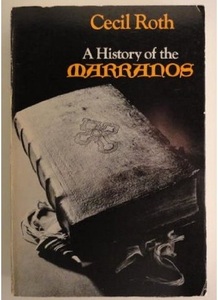NAMES ANALYSIS REPORT
You searched for:"Peixotto",
Here's what we found
There are many indicators that the name Peixotto may be of Jewish origin, emanating from the Jewish communities of Spain and Portugal.
When the Romans conquered the Jewish nation in 70 CE, much of the Jewish population was sent into exile throughout the Roman Empire. Many were sent to the Iberian Peninsula. The approximately 750,000 Jews living in Spain in the year 1492 were banished from the country by royal decree of Ferdinand and Isabella. The Jews of Portugal, were banished several years later. Reprieve from the banishment decrees was promised to those Jews who converted to Catholicism. Though some converted by choice, most of these New-Christian converts were called CONVERSOS or MARRANOS (a derogatory term for converts meaning pigs in Spanish), ANUSIM (meaning "coerced ones" in Hebrew) and CRYPTO-JEWS, as they secretly continued to practice the tenets of the Jewish faith.
Our research has found that the family name Peixotto is cited with respect to Jews & Crypto-Jews in at least 9 bibliographical, documentary, or electronic references:
From the records of Bevis Marks, The Spanish and Portuguese Congregation of London
Bevis Marks is the Sephardic synagogue in London. It is over 300 years old and is the oldest still in use in Britain.The Spanish and Portuguese Jews' Congregation of London has published several volumes of its records: they can be found in libraries such as the Cambridge University Library or the London Metropolitan Archive
From the burial register of Bethahaim Velho Cemetery, Published by the Jewish Historical Society of England and transcribed by R. D. Barnett.
The register gives us dates for the burials in the "Bethahaim Velho" or Old Cemetery. The dates are listed as per the Jewish calendar.
Finding Our Fathers: A Guidebook to Jewish Genealogy, by Dan Rottenberg
In this work Dan Rottenberg shows how to do a successful search for probing the memories of living relatives, by examining marriage licenses, gravestones, ship passenger lists, naturalization records, birth and death certificates, and other public documents, and by looking for clues in family traditions and customs. Supplementing the "how to" instructions is a guide to some 8,000 Jewish family names, giving the origins of the names, sources of information about each family, and the names of related families whose histories have been recorded. Other features included a country-by-country guide to tracing Jewish ancestors abroad, a list of Jewish family history books, and a guide to researching genealogy.
A History of the Marranos, by Cecil Roth.
The expulsion of the Jews from Spain in 1492 by the infamous decree of King Ferdinand and Queen Isabella was the culmination of a series of anti-Jewish persecutions throughout the 14th and 15th centuries in which thousands of Jews were massacred. Thousands of others converted in order to escape death. After the expulsion many more joined the ranks of these "new Christians" as an alternative to exile. A large number of converts, while outwardly professing Christianity, secretly continued to practice Judaism. These Marranos, as they were popularly known, were then mercilessly persecuted by the dreaded Inquisition which through tortures of forced confessions and auto-da-fes sent thousands to the stake. Many others managed to escape to countries outside the reach of the Inquisition where they created a widespread Marrano diaspora. Thousands of Marranos have survived even into our times. This seminal work by the eminent historian traces the tribulation of these secret Judaizers as well as the fate of those who succeeded in escaping to other lands where many of them rose to prominence in various fields of endeavor.
Precious Stones of the Jews in Curaçao; Curaçaon Jewry 1656-1957, by Isaac Samuel Emmanuel (1957)
Names taken from 225 tombstones of 2536 persons, 1668 - 1859, men, women and some Rabbis. Includes cemetery history and plan, biographies including family histories, chronological list of names, alphabetical list of family names + number of members + eldest tombstone year, large bibliography, general alphabetical index, 15 genealogies.
From the publication, "Los Sefardíes" (The Sephardim),by Jose M. Estrugo. Published by Editorial Lex La Habana, 1958.(Surnames common among the Sephardim)
When the Romans conquered the Jewish nation in 70 CE, much of the Jewish population was sent into exile throughout the Roman Empire. Many were sent to the Iberian peninsula. The area became known by the Hebrew word "Sepharad". The JEWS in SPAIN and PORTUGAL became known as "Sephardim" or and those things associated with the SEPHARDIM including names, customs, genealogy and religious rituals, became known as SEPHARDIC.
The Sephardim of England, by Albert M. Hyamson
A history of the Spanish & Portugese Jewish Community, 1492-1951.
Secrecy and Deceit: The Religion of the Crypto-Jews, by David Gitlitz
Despite the increased attention given to Hispano-Jewish topics, and the "conversos" or Crypto-Jews in particular, this is the first thorough compilation of their customs and practices. The author has culled from Inquisition documents and other sources to paint a portrait of the richness and diversity of Crypto-Jewish practices in Spain, Portugal, and the New World. The history of Spanish Jews, or Sephardim, stretches back to biblical times. The Jews of Spain and Portugal made formative contributions to all Hispanic cultures, the impact of which is first being measured and recognized today. The Sephardim experienced a Golden Age in Iberia between 900-1100, during which they acted as the intermediaries between the rival political and cultural worlds of Islam and Christianity. This Golden Age ended with the Reconquest of Spain by Catholic overlords, though for another 300 years the Jews continued to contribute to Iberian life. In 1391 and again in 1492, intense and violent social pressures were put upon the Jews to join the larger Christian community. Many Jews converted, often unwillingly. In 1492 the remaining Jews were exiled from Spain. The converted Jews (Conversos) became an underclass in Spanish society. Many of them clung tenaciously to Jewish practices in the face of torture and death at the hands of the Inquisition. Having lost contact with other Jews, these people developed a religion which was an admixture of Catholic and Jewish rituals. David Gitlitz examines these practices in detail and attempts to answer the question of whether the Conversos were in fact Jewish. Gitlitz's research is exhaustive. He has combed through thousands of Inquistion records, showing that a sense of "Jewishness" if not Jewish practice remained a core value of many Spaniards' lives well into the 1700s. Gitlitz is convincing in showing that the Inquisition unwittingly aided crypto-Jews in perpetuating themselves by publishing Edicts of Faith. Essentially checklists for informers, they described the behavior of "Judaizers" (sometimes the practices listed were absurd or simply erroneous). These, ironically, were used by Judaizers as guides to religious behavior. It is revealing that as the Inquisition faded, crypto-Judaism waned, though never totally vanished. Gitlitz's knowledge and research on the subject is encyclopedic. The book is written in a "textbook" style which makes it somewhat technical and dry, though it is enlivened by excerpts from Inquisition records, which Gitlitz has apparently chosen for their interest, irony, unintended comedy, or spiritedness. It is difficult to imagine that human beings would face the tortures of the rack for not eating pork. That these same tortured people could summon the will to laugh at their executioners is something wondrous. The book includes the names of the Sephardim (and sometimes their residences too).
The Jews of Jamaica, by Richard D. Barnett and Philip Wright.Oron Yoffe, Ben-Zvi Institute, Jerusalem, 1997.
The product of many years of painstaking research by two late scholars, Richard D. Barnett and Philip Wright, this volume presents the texts or summaries of 1456 tombstone inscriptions of Jews who lived in Jamaica between 1663, when the British ousted the Spanish, and 1880, when systematic registration of deaths was introduced. Jewish families who had fled the Inquisition in Spain and Portugal settled in Jamaica in increasing numbers during that time. Ashkenazic Jews also settled there in the eighteenth century. The Jews played a significant part in developing the island's natural resources and its international trade. Featuring detailed indexes by name, date and language, The Jews of Jamaica is a valuable tool for the study of immigration to the Americas, the surnames, given names and genealogy of Sephardi Jews. The texts of the inscriptions, many of them in three languages (Hebrew, English and Portuguese or Spanish), are of cultural interest and sometimes refer to dramatic events in the lives of the Jewish residents of Jamaica during a turbulent period.
Around the 12th century, surnames started to become common in Iberia. In Spain, where Arab-Jewish influence was significant, these new names retained their old original structure, so that many of the Jewish surnames were of Hebrew derivation. Others were directly related to geographical locations and were acquired due to the forced wanderings caused by exile and persecution. Other family names were a result of conversion, when the family accepted the name of their Christian sponsor. In many cases, the Portuguese Jews bear surnames of pure Iberian/Christian origin. Many names have been changed in the course of migration from country to country. In yet other cases "aliases", or totally new names, were adopted due to fear of persecution by the Inquisition.









